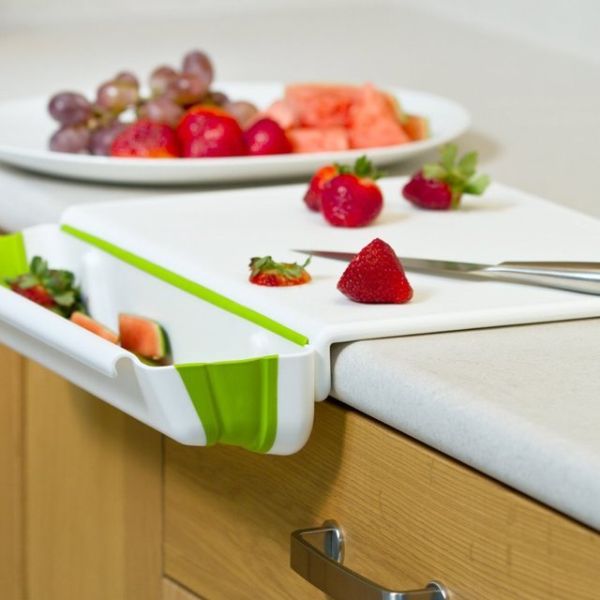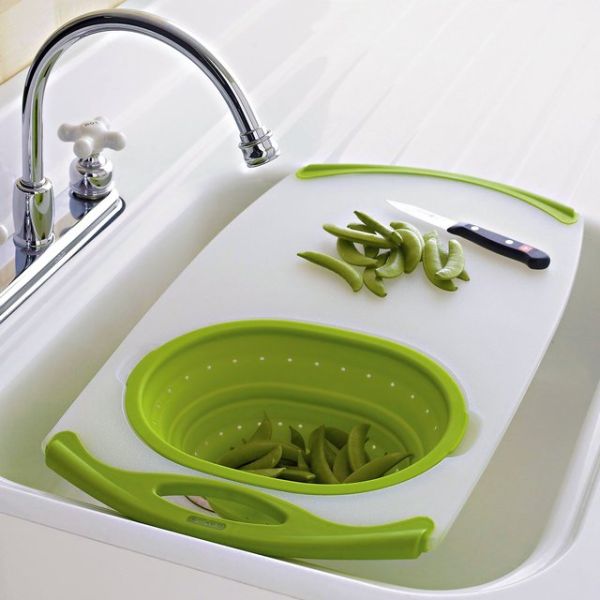Simple Guide to Easily Clean and Maintain Your Kitchen Sink
Considering the number of times you use it, you would think that your kitchen sink is relatively clean. However, letting the water run down the drain throughout the day will not cut it with germs and bacteria. To keep your home free of dangerous bacteria and harmful germs, it is time to consider sanitizing your kitchen sink!
So, what do you use to clean and sanitize your sink? To keep your utensils, plates, and bowls bacteria- and germ-free, your kitchen sink needs to have cleaning and sanitation tasks done regularly.
How to Clean and Sanitize Your Kitchen Sink
Materials You Need:
Baking Soda
Distilled White Vinegar
Paper Towels
Tools You Will Use:
Old toothbrush
Soft sponge
Important Note:
You can use a mild soap and nylon sponge or soft rag to wipe your sink down for daily cleaning. You may also use an All-purpose or glass cleaner in a pinch. However, it is crucial that you avoid ammonia, bleach, or rough, abrasive cleaners on stainless steel sinks. You should also avoid using abrasive sponges. All of those things can alter and damage the sink’s finish.
Instructions:
Fully rinse out your kitchen sink. If you have a stainless steel sink, the salt and acid in food can potentially damage its finish. So, it is important to rinse food and liquids to prevent pitting.
Next, sprinkle baking soda onto the surface of the kitchen sink. Working it into a paste, then rinse it thoroughly.
After that, line the sink with paper towels previously soaked in white vinegar. Acetic acid or white vinegar is a great disinfectant. It also acts as a deodorizer and cuts grease. Allow the paper towels to rest for about 20 minutes. Then, dispose of the paper towels.
Next, rinse and wash the sink with warm soapy water.
For the sink’s faucets and handles, clean and wipe them with a mild soapy solution. Make use of an old toothbrush to get in the hard-to-reach areas. If spots remain, use a cloth soaked in white vinegar instead.
Once you are finished cleaning, rinse it once more and dry with a soft rag. Your sink should now be fresh and clean!

Kitchen Sink Style Guide
Whether you’re updating your kitchen or customizing a new home, choosing a kitchen sink is important. You will use the sink multiple times daily, and the style you select must fit into your kitchen’s design as well as into your lifestyle. With numerous factors to consider when picking your kitchen accessories, you have more to think about than just the space available, but we’re here to help
Things to Consider in a Kitchen Sink
Installing a sink requires using one of many different mounting methods. We have undermount models that merge seamlessly with your countertops. These sinks install beneath the counters, for a complete integration into your kitchen and no sink rim around the bowl.
Other mounting styles include drop-in, vessel and farmhouse. Drop-in sinks are easier to install but harder to clean. Vessel sinks sit atop the counters, which also makes cleaning around the sink a little more tricky. Farmhouse sinks have an eye-catching apron in the front. The apron creates a focal point in the kitchen, but in some cases your cabinets will need major changes to accommodate the apron. However, newer farmhouse sink designs and custom made farmhouse sinks are available with a shorter aprons for them to be installed in an existing base cabinet with slight modifications.
Size
The size of the area you have available will also help you choose a fixture. For instance, if you have little space on an island, you may want a small bar sink such as the Karran Del Mar model, which only measures 14-inches by 17-inches on the outside. If you have ample room, you may want a more massive sink to make daily activities like dishes, meal prep and more a bit easier.
Primary Use
When you’re selecting a sink, you also need to consider where you want to put it to make the best use of your time in the kitchen. If you have a window you’d like to look out of while washing dishes, for example, you might consider placing your new sink under it. Or for easier food preparation, it might be better to set the sink near the stove. You might also want to make cleaning up simpler by locating the dishwasher nearby.Aside from their beauty, sinks are also practical fixtures in your kitchen. Don’t discount how useful they can be during food preparation and cleaning.
Wondering Where to Put the Sink in the Kitchen?
How much thought have you put into where it should reside in your kitchen? If you are on a tight budget, you may need to leave it where it is. But if you can, consider where you’ll want to be standing while working at the kitchen sink, as well as what other appliances or elements should be near. Here are some other considerations to help you figure out the best place for the sink.
Use existing plumbing
If you are on a tight remodelling budget or are just looking for areas where you can cut costs so you can splurge on your dream countertops or backsplash tile, consider reusing your existing plumbing as much as possible. This kitchen was a total remodel, but because the sink and dishwasher locations were unchanged, the homeowners saved quite a bit on plumbing contractor fees. If your kitchen layout is truly dysfunctional, this may not be an option, but I always take a stab at leaving the plumbing alone.
Give yourself a view
If your kitchen is part of a new construction project, or you are either unable or disinclined to keep the sink where it is, then do yourself a favour and give yourself a nice view. I am not a fan of washing dishes by hand but would gladly take on the chore if I had this fabulous view to take in.
Face your peers
Don’t turn your back on your guests if you don’t have to. If you entertain often and have an open kitchen, this is an ideal layout. It allows the cook to prep or clean up in the kitchen while still conversing with guests or keeping an eye on kids.
Pair up appliances
This one is a no-brainer. You definitely want your dishwasher and sink to be next to each other. This will make loading the dishwasher easier and more efficient; you can just scrape or rinse off your plates in the sink before setting them in the dishwasher. It’s also useful when you are emptying the dishwasher and need to dump out any water that has pooled on your dishes.
Things to Do if You Want to Unclog Your Kitchen Sink
Are you staring at a clogged kitchen sink? Is the stagnating water in the sink making you feel sick? The good news is you can unclog the sink without calling a plumber or pouring hazardous chemicals down the drain.
Don’t Put Vegetable Peelings Down Disposal
Although the garbage disposal is a powerful and useful way to get rid of food waste, it is not meant for certain vegetables. Don’t put potato, carrot or celery peelings down the disposal. These veggies are fibrous or contain a lot of starch which can jam the disposal motor and clog your sink drain-piping every time. There are other food items that occasionally will clog your sink. If this happens, follow the next four tips
Use Your Plunger
Plunger is a must-have tool for every household because it can be used to unclog any drain in any part of the house including the kitchen. Yes, the simple plunger can unclog your kitchen sink too. When you use the plunger, plug the other holes in you kitchen sink with a rag cloth. Also, ensure that the plunger cup completely covers the clogged kitchen sink hole. Now, keep the plunger in an upright position and plunge about ten times vigorously. This should remove any vegetable peels, food leftovers or any other solids in the kitchen sink.
Clear the P-trap
The P-trap is the pipe below your sink that’s shaped like the letter P (on its side). You should be able to spot it when you look in the cabinet below your sink. This pipe, shaped to provide a seal against sewer odors, gets clogged when receiving larger solid objects. To unclog the P-trap, you need a pair of gloves and a bucket. You should unscrew the large nut on both the sides of the trap with your bare hands and remove the pipe. Make sure you place a bucket right below the trap to collect all the unclogged water. You can also run your hands through the pipe to remove any solid objects.
Use a Metal Wire
Sometimes using a metal wire to push down or pull up debris from your drain can help unclog your kitchen sink. If you don’t have a metal wire, unbend a wire hanger and use it in the kitchen drain hole. Since this is time-consuming, you’d only use this trick as a last resort. It works well when you know what’s inside the drain

PICKING THE PERFECT KITCHEN SINK AND FAUCET
Some things are just better together, especially in the kitchen. It could be a case of opposites attracting, like a black and white color palette or creamy and crisp flavors that blend just right. Perhaps it’s a pair of objects that together create a perfect combination of function and beauty. Either way, when the pairing is perfect, you just know it.
The perfect sink-and-faucet pair is the key to an efficient work space, defining the way you prep, cook, and clean up. The right products bring energizing color and engaging style to your kitchen, laundry room, mudroom and bar. Whether sleek and streamlined or steeped in vintage style, there’s a perfect pair for every size and type of kitchen. With so many options, though, how do you choose the right ones? Here are a few things to think about as you start to plan.
Location. Which spaces in your kitchen, bar, or laundry room will need a sink and faucet? Maybe your kitchen could gain efficiency from an extra sink and faucet on the island, or a pot-filler faucet near the cooktop.
Material. Would you like a sink in enameled cast iron, stainless steel, or composite material? Each material has its own benefits and distinctive look.
Style. Consider which sink and faucet style and installation options will best meet your needs. Does your taste run more toward traditional looks, modern styles or somewhere in between? Do you like the look of a farmhouse sink? Do you plan to replace your countertops? If you do, you’ll have more options for your sink type.











